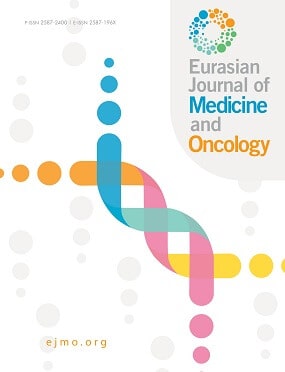

Proven Safety of Alternative Sedation Regimens for Esophagogastroduedonoscopy: A Retrospective Comparative Study
Sinan Uzman1, Bunyamin Gurbulak2, Sevim Baltali3, Hasibe Aslan Sunul1, Ibrahim Ulusoy4, Idris Kurtulus41Department of Anesthesiology and Reanimation, Haseki Training and Research Hospital, Istanbul, Turkey, 2Department of General Surgery, Istanbul Training And Research Hospital, Istanbul, Turkey, 3Department of Anesthesiology And Reanimation, Istanbul Training And Research Hospital, Istanbul, Turkey, 4General Secretary of Public Hospitals Association of Fatih, Istanbul, Turkey,
Objectives: In this retrospective study, we aimed to compare cardiopulmonary side effects, sedation characteristics, and patient satisfaction of propofol–meperidine and propofol–ketamine sedation for esophagogastroduodenoscopy (EGD). Methods: Data were extracted from the anesthesia and endoscopy records of the patients. Patients aged >18 years who underwent elective diagnostic EGD under sedation between January 2015 and December 2016 were enrolled in the study. Depending on the sedation procedure, the patients were divided into two groups: propofol–meperidine group (Group PM) and propofol–ketamine group (Group PK). Cardiopulmonary side effects (hypotension, bradycardia, apnea and hypoxemia), procedure times, and patient satisfaction were compared between the groups. Results: In total, 154 consecutive patients who underwent elective diagnostic EGD between January 2015 and December 2016 under sedation with propofol–meperidine and propofol–ketamine were included in the study. The overall incidence of side effects did not differ between the groups, but the incidence of hypotension was significantly higher in Group PM compared with Group PK (7.8% vs. 0%, p=0.028). There was no significant difference in hypoxemia (p=0.597) and apnea (p>0.999) between the two groups. Awake time (time interval between the removal of the endoscope and responds readily to name spoken in normal tone) was significantly shorter in Group PM compared with Group PK (7.21±3.70 vs. 8.91±4.10 min, p=0.008). Patient satisfaction for the two groups were similar (p=0.245). Conclusion: The propofol–ketamine sedation regimen seems to be superior compared with the propofol–meperidine sedation regimen in terms of hemodynamic stability. Both sedation regimens have similar respiratory safety profile. Propofol–meperidine sedation provided faster recovery times than propofol–ketamine sedation for EGD. Furthermore, high patient satisfaction levels were obtained with both sedation regimens.
Cite This Article
Uzman S, Gurbulak B, Baltali S, Aslan Sunul H, Ulusoy I, Kurtulus I. Proven Safety of Alternative Sedation Regimens for Esophagogastroduedonoscopy: A Retrospective Comparative Study. EJMO. 2017; 1(3): 129-135
Corresponding Author: Sinan Uzman



